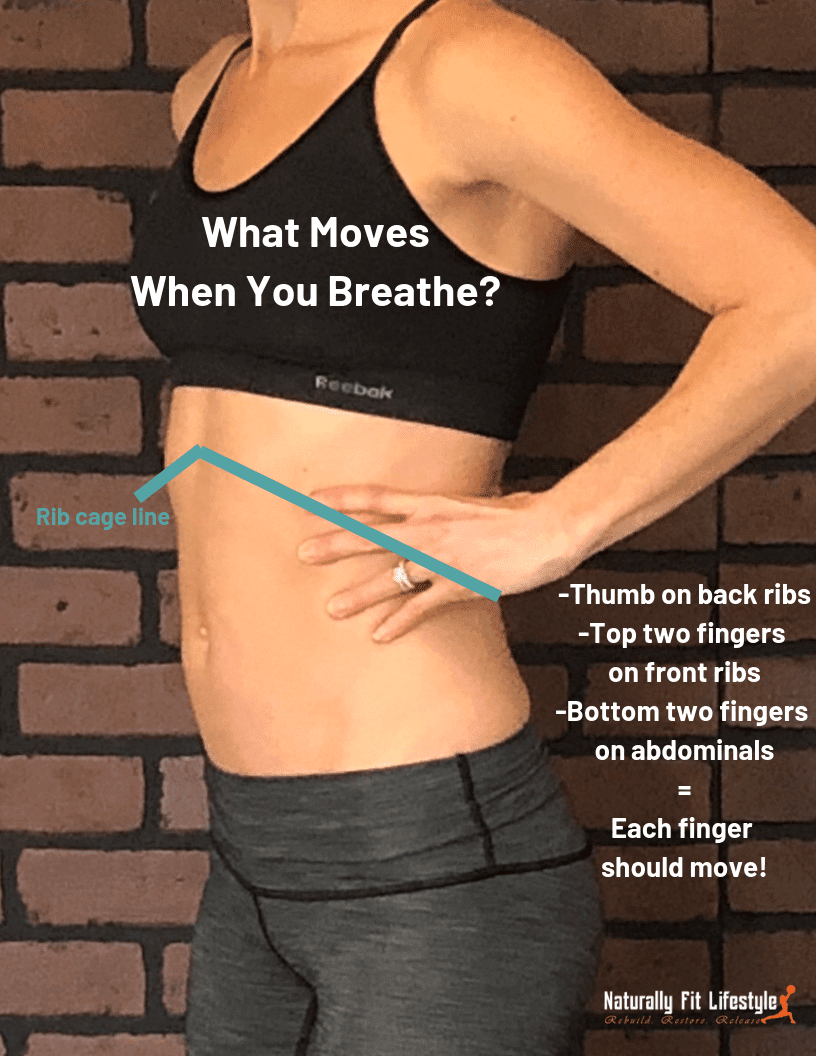How to deep breathe properly… and its not what you think
Breathing is everything!
Proper breathing is very important to our health! Without the breath, there is no life. Every cell in your body needs oxygen to function.
You get the oxygen your cells need from the air you breathe. Your body cells use the oxygen you breathe to get energy from the food you eat. This process is called cellular respiration. During cellular respiration the cell uses oxygen to break down sugar. Breaking down sugar produces the energy your body needs. (CK-12 Foundation)
Thus, getting enough oxygen by full 360 breathing, is paramount for the proper working order of your body.
Taxing effect of shallow breaths
Constricted small, shallow, vertical breaths, ones where the top of your chest and shoulders move when you take air in, are stressful to the body. Cortisol is released, which is public health enemy number 1!
Once the alarm to release cortisol has sounded, your body becomes mobilized and ready for action — but there has to be a physical release of fight or flight. Otherwise, cortisol levels build up in the blood, which wreaks havoc on your mind and body. (Psychology Today)
Relaxation of deep breaths
When a deep full breath is taken, your diaphragm contracts down which stimulates the vagus nerve. The vagus nerve tells your body to chill out by sending a message back to the brain to release different enzymes and proteins to help your body calm down. Then wonderful things happen within your body when you unravel and slow down.
Let me tell you, I’ve been looking for the answer on how to relax better… and come to realize that its right within me, within my breath (which I think most of us know… but always need to be reminded of it again)! What a fantastic way our body was designed to relax. For peets sake even my apple watch tells me to breathe… and I ignore it half the time. 🤦♀️
Without thinking about it, how do you naturally breathe?
Do your shoulders rise and fall? Are you an all chest breather? Are you an all belly breather…does only your stomach go in and out? Does both your stomach and your rib cage expand? Does your back move at all?
How you should be breathing:
Watch a baby breathe. Their chest AND their stomach expands. WOW! I mean it really does make sense, since your lunges are in your chest and your diaphragm is at the bottom of your chest and top of your abdomen. Both should move horizontally.
Most individuals are either vertical breathers (meaning they breathe up and into their shoulders) or they are all belly breathers. If you’ve been in the fitness world for a while now, I’m sure you have learned shoulder/chest (vertical) breathing is bad and belly breathing is best. Well, that is only partially true.
If all we did was belly breathe… which I have made the mistake of doing in the past, then the chest gets constricted and tight. All those little intercostal muscles (muscles between each rib) do not get to move too much and in turn makes chest expansions more difficult. Thats how a lot of us end up with too much belly expansion. The pressure from your breath is then either forced up into the shoulders or down into the belly. And if the abs are weak, the belly can expand easily without any effort. Our body naturally follows the path of least resistance.
Then if there is only expansion in the abdomen, the rectus abdominis muscle is lengthened along with the fascial connections of the linea alba. So the abdominals actually loose some of their control. And if you have an abdominal issue, such as diastasis recti, it can actually prevent your abdominal separation from healing, cause back and hip pain and core instability.💥

Lets fix it and help you get a 360 expansion of your ribcage
So think of an umbrella. When you open it at the height of your chest, you see that tremendous 360 expansion that happens. This is exactly what you want your mid and lower chest to look like when you take a deep breath.

The front, sides and back of your lower ribs should move. The belly will still move, however there is control within the abdomen, allowing the back body to expand greater. To get rib expansion you need eccentric transverse abdominal (deep inner core) and oblique strength. Basically, your core needs to maintain tension while letting your ribs expand. Its hard! Check out my short breathing demo below. Watch closely to see my back ribs moving, along with the slight, controlled expansion of my abdomen ⬇︎
Try this test:

Grasp the bottom of your rib cage. Your index and middle fingers should be on your front lower ribs, your thumb should be on your back lower ribs and your pinky and ring finger should be right underneath your ribs and pressed in a little.
Think about what I said above, in what areas should move… Now take a deep breath.
What moved?
- Did the front, sides and back of your ribs move? They should move a lot.
- Did you feel expansion right under your ribcage (meaning the diaphragm contracted down)? You should feel a little.
If the wrong places moved, you now have a goal to work towards!
Follow through with proper breathing mechanics in other areas of life
Once you have mastered 360 expansion in your ribcage and directly underneath your ribcage while sitting still, then you need to carry that over to other areas of core function. So when you’re running, weight lifting, picking up your kids, and carrying grocery’s inside, think about it.
To be able to maintain proper core tension in exercises that require a strong core, 360 breathing is key. Your breathing could be affecting your core control and causing other muscles to pick up the slack, which increases stress and tension in those areas. Not allowing your body to cheat and to be able to maintain some core tension throughout exercises or movements, on the inhale and exhale… will take your core work to a whole new level and will help provide more spinal stabilization.
Ditch the 100% belly breathing and watch your core muscles find a new level of strength, your chest muscles gain mobility and your body a new avenue of stress relief.
Review:
Getting that umbrella expansion in your torso will increase the quality of each breath you take. During daily life, workouts and relaxation… 360 deep breathing is best.
You can also use 360 breathing to help alleviate aches, pains and higher stress levels. This kind of expansion will surprisingly take pressure off nerves and decrease tension within certain areas of the body that are causing you pain. Especially if you use it as you’re stretching those areas that are causing discomfort.
Breath is life and control within the breath is relaxation and strength.








